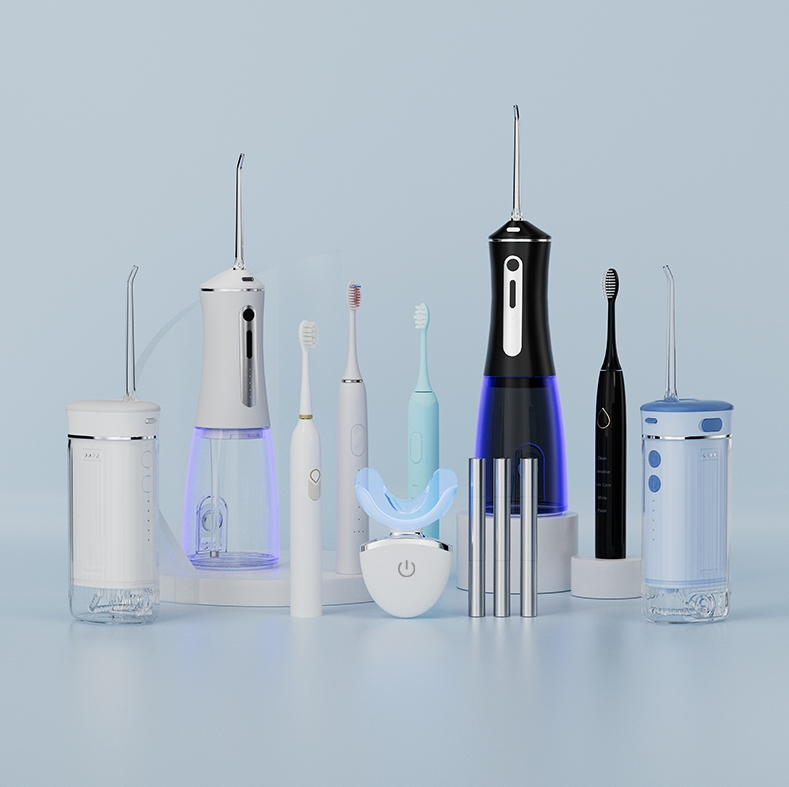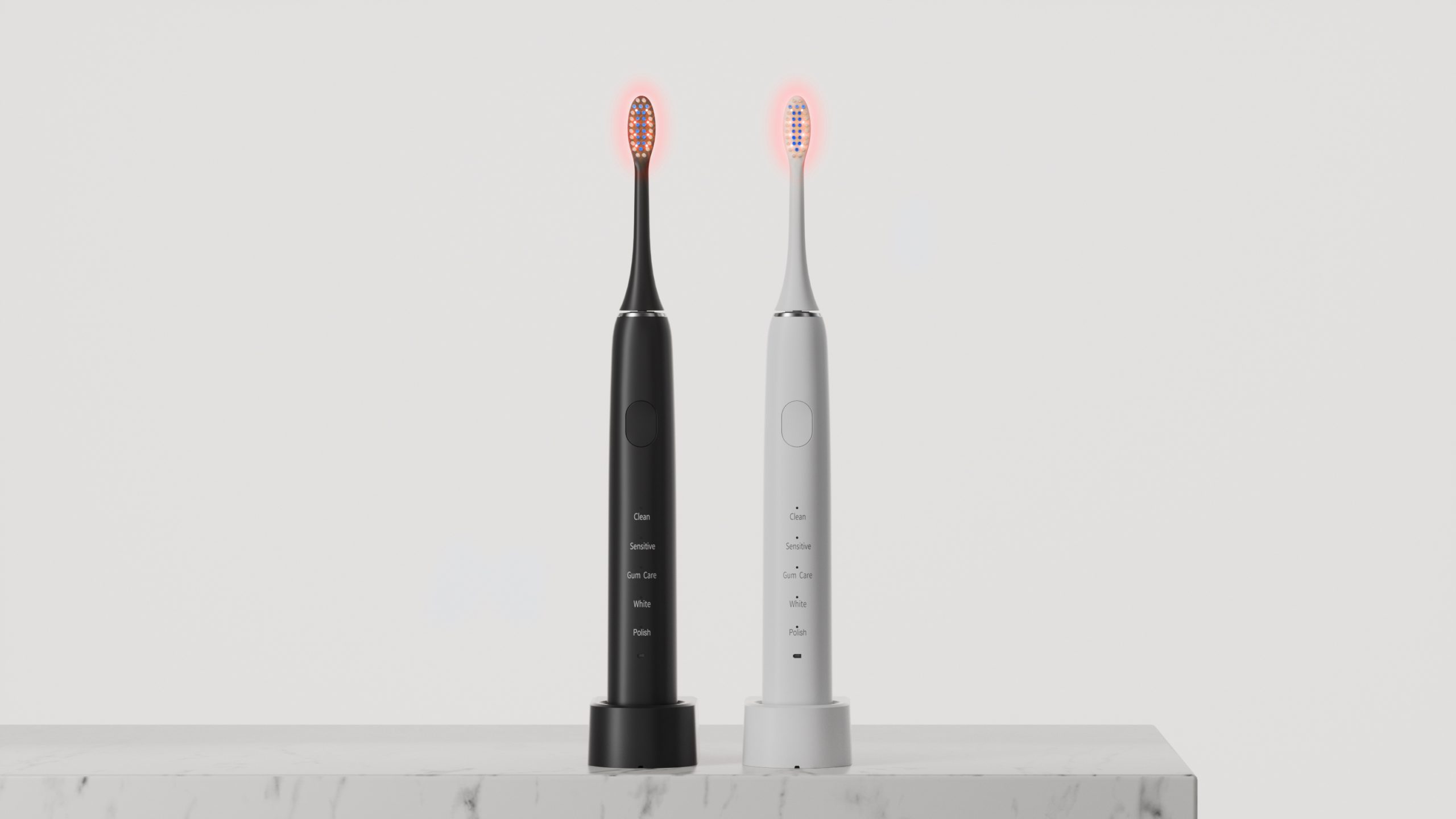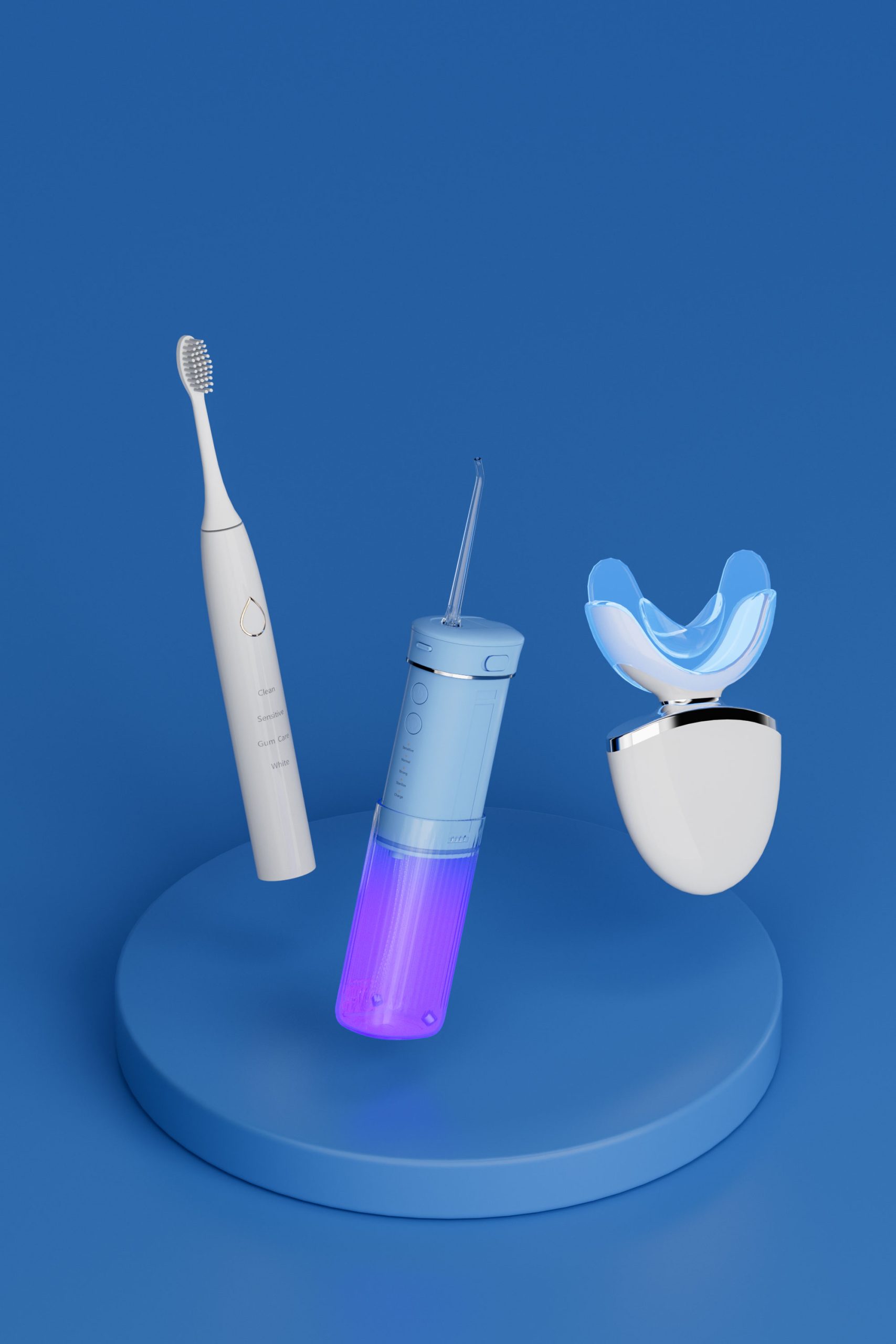As blue light whitening devices become mainstream in both professional and at-home use, attention is shifting toward light wavelength accuracy and its impact on both whitening efficacy and oral safety. For OEM/ODM manufacturers, selecting the right wavelength of whitening teeth devices is a key differentiator in product performance, especially when dual light wave mode switching (blue + red) is involved. This guide will explain the function of each wavelength range, explore red light assisted treatment, and provide recommendations for wavelength configuration within a scientifically backed spectral safety range.
The blue light wavelength range of 460–490nm is widely used to accelerate the chemical reaction between hydrogen peroxide and tooth stains. Its benefits include:
Efficient stain breakdown by energizing the peroxide molecules
Reduced treatment time for both professional and home users
Minimal heat emission, reducing discomfort during use
Choosing a wavelength in this band ensures a balance between whitening effectiveness and user comfort. Devices configured within this range have proven compatibility with most whitening gels.
Incorporating red light assisted treatment (620–660nm) into whitening devices is an advanced feature aimed at post-whitening care. Red light offers:
Improved blood circulation in gum tissues
Cell regeneration support, helping with micro-inflammation
Enamel protection, particularly useful for sensitive teeth or post-treatment healing
By configuring red light at this therapeutic wavelength, manufacturers add a valuable differentiator—enhancing both functionality and user experience.
Modern whitening devices are increasingly being designed with dual light wave mode switching, allowing users to toggle between blue and red light depending on the treatment phase. Benefits include:
Multi-functional treatment options in a single device
Flexible usage scenarios (e.g., pre-whitening and post-care modes)
Brand differentiation through smart design and UI integration
OEM/ODM manufacturers can implement this feature through circuit board control systems and LED module customization, enhancing product versatility.
When selecting LED light wavelengths, staying within the scientifically recommended spectral safety range is essential to avoid risks such as:
Overheating of soft tissues
Phototoxicity from UV or extreme blue light (<450nm)
Irritation to enamel or gums
Both 460–490nm (blue) and 620–660nm (red) fall safely within optimal therapeutic and cosmetic light ranges, offering maximum efficacy with minimum risk when properly applied.
Manufacturers must also ensure compliance with FDA, CE, or local light-emission safety regulations when designing wavelength configurations.
A carefully configured wavelength of whitening teeth device is not just a technical detail—it’s a key element of product safety, performance, and market competitiveness. By integrating:
460–490nm blue light for fast whitening
620–660nm red light for enamel protection and recovery
Dual light wave mode switching for multi-purpose treatments
Strict adherence to spectral safety range
…manufacturers can deliver a premium whitening solution that meets professional standards and consumer expectations alike.
If you’re an OEM/ODM brand looking to configure your next-generation whitening device with scientifically tuned light wavelengths, contact us for expert customization and compliance-ready solutions. https://www.powsmart.com/contact-us/
Does Toothbrush Battery Life Impact Gum Recession Risk?

Solving the Common Issues of New Teeth Whitening Devices: Smart Countdown + How to Reduce 70% of Misoperations?
-2-scaled.png)
The Scientific Principle of Red and Blue Light Teeth Whitening Device: How Can 460nm Blue Light and 630nm Red Light Safely Whiten Teeth?
How to Choose Good Bristles When Selecting an Electric Toothbrush?

Functional Electric Toothbrushes: Building Market Competitiveness through OEM Innovation

Application of Phototherapy Technology in Teeth Whitening and Oral Care

Oral Care Design for Women: Women Are the Main Consumers of the Oral Care Market
Why Dentin Exposure Risk with UV Light Risks?

Why a Hindi brushing guide is essential for your First-time user guide
Does Warranty Cover Motor Overheating in Electric Toothbrushes?
How Does Cold Light Wavelength Affect Bleach Decomposition?
Why Do Pediatric Warnings Address Bleach Residuals?
.jpg)
Where to read a Bangalore gadget review for an App-connected toothbrush?
Short Battery Life and Motor Overheating in Electric Toothbrushes: How to Enhance Durability?
Is Battery Swelling Causing Pressure Loss?
.jpg)
Real-Time Brushing Tracking: How Smart Toothbrushes Improve Oral Care

electric toothbrush heads Deep Clean
.jpg)
Florida Electric Toothbrush – Powsmart PTR-C8

Electric toothbrush heads Charcoal Infused-Diamond

Private Label Whitening Gel

Customization Teeth Whitening Gel

electric toothbrush heads Ultra Soft

electric toothbrush heads Charcoal Infuse-Round

electric toothbrush heads Regular Clean
whstapp
whstapp
National Toll-Free Service Hotline
+86 755 86238638